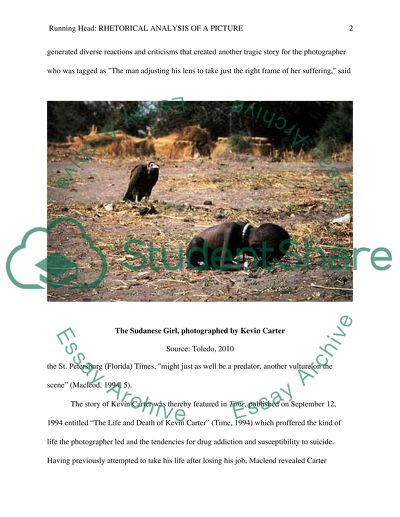Cite this document
(“The Sudanese Girl, photographed by Kevin Carter Essay”, n.d.)
Retrieved from https://studentshare.org/visual-arts-film-studies/1425203-the-sudanese-girl-photographed-by-kevin-carter
Retrieved from https://studentshare.org/visual-arts-film-studies/1425203-the-sudanese-girl-photographed-by-kevin-carter
(The Sudanese Girl, Photographed by Kevin Carter Essay)
https://studentshare.org/visual-arts-film-studies/1425203-the-sudanese-girl-photographed-by-kevin-carter.
https://studentshare.org/visual-arts-film-studies/1425203-the-sudanese-girl-photographed-by-kevin-carter.
“The Sudanese Girl, Photographed by Kevin Carter Essay”, n.d. https://studentshare.org/visual-arts-film-studies/1425203-the-sudanese-girl-photographed-by-kevin-carter.


